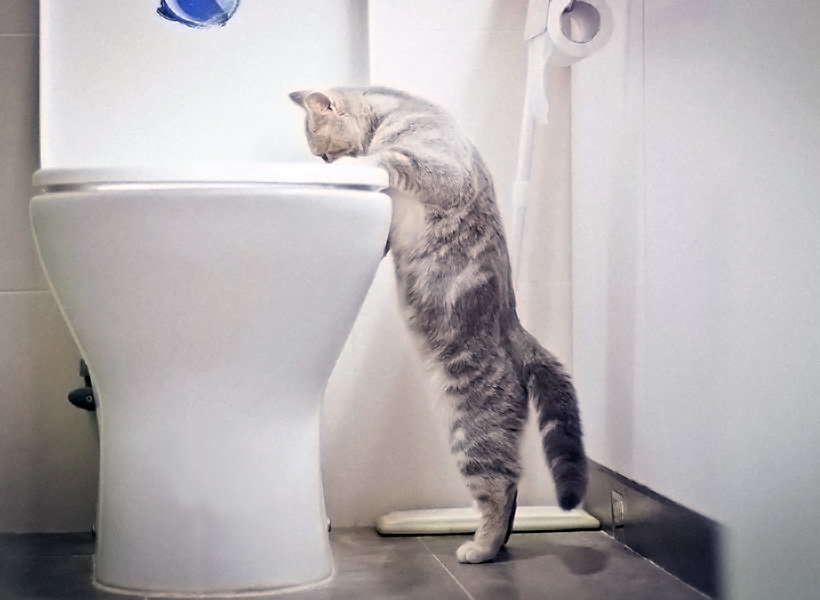Significant Reasons Why Animal Waste Ought to Never Be Flushed Down the Toilet
Significant Reasons Why Animal Waste Ought to Never Be Flushed Down the Toilet
Blog Article
They are making a number of great observations related to 10 Things You Should Never Flush Down The Toilet in general in this article followed below.

When it concerns taking care of waste, particularly animal waste, lots of people often turn to the convenient option of flushing it down the toilet. However, this seemingly simple option can have severe repercussions for the environment and public health. In this short article, we'll explore why flushing animal waste down the commode is a poor idea and provide different techniques for appropriate disposal.
Intro
Correct waste disposal is essential for keeping ecological sustainability and public health. While it might seem safe to purge animal waste down the bathroom, it can cause numerous concerns, both for the atmosphere and human health.
Threats of flushing animal waste
Environmental impact
Flushing animal waste presents damaging bacteria and microorganisms into waterways, which can negatively affect marine ecological communities. These virus can contaminate water sources and harm aquatic life, interrupting delicate environments.
Public health issues
Animal waste contains dangerous bacteria such as E. coli and Salmonella, which can present severe wellness threats to humans. Flushing pet waste down the toilet can pollute water materials, bring about the spread of illness and infections.
Alternatives to flushing
Instead of purging animal waste down the toilet, there are numerous alternate disposal methods that are a lot more eco-friendly and hygienic.
Composting
Composting pet waste is an eco-friendly method to dispose of it. By composting, raw material is broken down right into nutrient-rich dirt, which can be utilized to fertilize yards and plants.
Land fill disposal
Dealing with animal waste in a garbage dump is an additional choice. While not as eco-friendly as composting, it is a much safer option to flushing, as it protects against the contamination of water sources.
Animal garbage disposal systems
There are customized family pet waste disposal systems available that securely and hygienically get rid of pet waste. These systems commonly use enzymes to break down waste and remove odors.
Actions to appropriate animal garbage disposal
To make sure proper disposal of animal waste, comply with these actions:
Scooping and nabbing waste
Regularly scoop and bag pet waste making use of naturally degradable bags. This avoids waste from infecting the environment.
Utilizing marked waste bins
Dispose of bagged pet waste in marked waste bins, such as compost bins or landfill bins. Stay clear of flushing it down the bathroom in any way costs.
Cleaning up can and pet dog locations regularly
Consistently tidy can and pet areas to prevent the build-up of waste and microorganisms. Use pet-safe cleaning products to preserve health.
Benefits of correct disposal techniques
Embracing proper disposal approaches for animal waste provides several advantages:
Lowered environmental pollution
Appropriate disposal approaches minimize the risk of environmental pollution, safeguarding rivers and ecological communities from contamination
Reduced risk of water contamination.
By staying clear of flushing pet waste down the commode, the threat check here of water contamination is considerably minimized, guarding public health.
Improved hygiene and health
Correct disposal approaches promote better sanitation and health, developing a more secure setting for both humans and animals.
Final thought
In conclusion, purging animal waste down the commode is harmful to the setting and public health. By adopting alternate disposal methods and complying with proper waste monitoring techniques, we can lessen the negative influence of animal waste and add to a cleaner, healthier earth.
What To Do With Dog Poo – The Do's And Don'ts Of Disposing Of Faeces
Dog poo bins
Some councils provide dedicated dog waste bins in popular dog-walking areas that can take dog poo that has been bagged but you can legally dispose of dog waste in any public litter bin, as long as it is securely bagged. This also applies to your wheelie bin at home.
Do not flush
Water companies do not recommend flushing dog faeces down the toilet because certain parasites can survive the water processing treatment and are potentially harmful to humans. You should also never consider flushing dog poo that has been bagged down the toilet as the bags will not break down and instead create severe blockages in the sewage system.
In the woods
The Forestry Commission promotes a ‘stick and flick’ method for dealing with waste in the woods. This means finding a stick and using it to flick any poo from off the path so that it is out of the way of other walkers. You could also bury it as long as it is not in an area where there might be livestock.
Livestock
Parasites found in dog poo can be transmitted to livestock if they inadvertently eat infected faeces that has been left on grazing land. This could result in the death of sheep or abortion in cattle so you should always make sure you pick up your dog’s waste in fields where livestock could be present.

Consistently tidy can and pet areas to prevent the build-up of waste and microorganisms. Use pet-safe cleaning products to preserve health.
Benefits of correct disposal techniques
Embracing proper disposal approaches for animal waste provides several advantages:
Lowered environmental pollution
Appropriate disposal approaches minimize the risk of environmental pollution, safeguarding rivers and ecological communities from contamination
Reduced risk of water contamination.
By staying clear of flushing pet waste down the commode, the threat check here of water contamination is considerably minimized, guarding public health.
Improved hygiene and health
Correct disposal approaches promote better sanitation and health, developing a more secure setting for both humans and animals.
Final thought
In conclusion, purging animal waste down the commode is harmful to the setting and public health. By adopting alternate disposal methods and complying with proper waste monitoring techniques, we can lessen the negative influence of animal waste and add to a cleaner, healthier earth.
What To Do With Dog Poo – The Do's And Don'ts Of Disposing Of Faeces
Dog poo bins
Some councils provide dedicated dog waste bins in popular dog-walking areas that can take dog poo that has been bagged but you can legally dispose of dog waste in any public litter bin, as long as it is securely bagged. This also applies to your wheelie bin at home.
Do not flush
Water companies do not recommend flushing dog faeces down the toilet because certain parasites can survive the water processing treatment and are potentially harmful to humans. You should also never consider flushing dog poo that has been bagged down the toilet as the bags will not break down and instead create severe blockages in the sewage system.
In the woods
The Forestry Commission promotes a ‘stick and flick’ method for dealing with waste in the woods. This means finding a stick and using it to flick any poo from off the path so that it is out of the way of other walkers. You could also bury it as long as it is not in an area where there might be livestock.
Livestock
Parasites found in dog poo can be transmitted to livestock if they inadvertently eat infected faeces that has been left on grazing land. This could result in the death of sheep or abortion in cattle so you should always make sure you pick up your dog’s waste in fields where livestock could be present.

Do you enjoy reading about Why you should never flush dog poop down the toilet? Write feedback down the page. We'd be happy to know your insights about this blog entry. We hope that you come back again in the future. So long as you enjoyed our article kindly remember to share it. I appreciate your readership.
Details Here Report this page